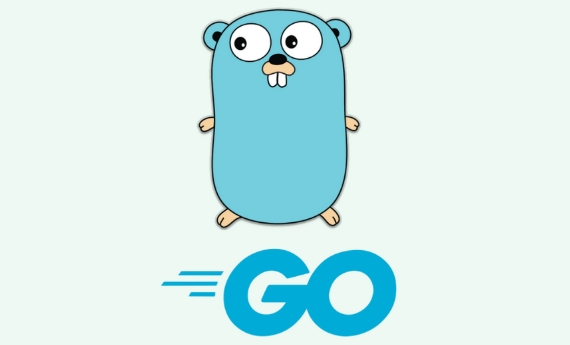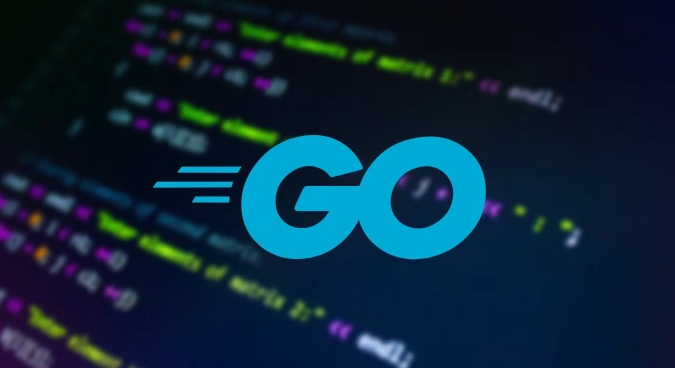 Backend Development
Backend Development
 Golang
Golang
 Choosing a Microservice Framework: KitEx/GoMicro vs Python Flask/FastAPI Approaches
Choosing a Microservice Framework: KitEx/GoMicro vs Python Flask/FastAPI Approaches
Choosing a Microservice Framework: KitEx/GoMicro vs Python Flask/FastAPI Approaches
Jul 02, 2025 pm 03:33 PMThe choice of microservice framework should be determined based on project requirements, team technology stack and performance expectations. 1. Given the high performance requirements, KitEx or GoMicro of Go is given priority, especially KitEx is suitable for complex service governance and large-scale systems; 2. FastAPI or Flask of Python is more flexible in rapid development and iteration scenarios, suitable for small teams and MVP projects; 3. The team's skill stack directly affects the selection cost, and it will continue to be more efficient when it has accumulated Go. The Python team's rash conversion to Go may affect efficiency; 4. The Go framework is more mature in the service governance ecosystem, suitable for medium and large systems that need to connect to advanced functions in the future; 5. A hybrid architecture can be adopted according to the module, without having to stick to a single language or framework.

When choosing a microservice framework, many people are confused about using Go KitEx or GoMicro, or Python's Flask or FastAPI. In fact, the key depends on your project requirements, team technology stack and performance expectations.

Go frameworks are preferred for scenarios with high performance requirements
If your system has relatively high requirements for concurrency processing capabilities and response speed, such as to establish a high-concurrency order processing module or real-time data processing service, the advantages of Go language are very obvious. Both KitEx and GoMicro are designed for high performance, especially KitEx, which has been largely verified within bytes and are suitable for complex service governance. Go's native concurrency model (goroutine) is also more suitable for handling large numbers of concurrent requests.

- KitEx supports multi-protocol and plug-in architecture, suitable for medium and large projects
- GoMicro is lighter and suitable for quick and simple service
- If you already have the Go technology stack accumulation, it will be smoother to migrate or develop new services
In this case, Python's synchronization model will become a bottleneck. Even if FastAPI adds asynchronous support, the overall performance is still not as good as Go.
Rapid development and iteration, Python may have more advantages
If your project requires quick trial and error, frequent updates, or the functions themselves do not involve too many compute-intensive tasks, such as doing a backend management system, a small API interface service, or an MVP (the smallest feasible product), then using Flask or FastAPI is more flexible.

- FastAPI comes with document generation and type checking, and has high development efficiency
- Although Flask is more basic, it has a rich ecosystem and many ready-made plug-ins are available.
- Python is simple to write, easy to debug, suitable for small teams to get started quickly
Moreover, in machine learning, data analysis and other scenarios, Python has natural advantages. Many AI-related services are encapsulated and provided external interfaces based on FastAPI.
Team skill stack determines the cost of technology selection
If the team is already familiar with Go, it is natural to continue using KitEx or GoMicro; but if you focus on Python and insist on turning to Go, the initial learning cost and development efficiency decline may not be worth the cost.
For example: A startup company that is just starting out has all the back-end engineers in Python. At this time, it will affect the pace of online use. On the contrary, if you are building a team from scratch and have performance pursuits, choosing the Go system framework directly will be more conducive to long-term maintenance.
Microservice ecology and integration capabilities are also considerations
KitEx and GoMicro have complete component support in service discovery, load balancing, and configuration center, which is especially suitable for medium and large systems. Although Python also has tools like Nameko and Connexion, its maturity is slightly lower in enterprise-level service governance.
If your system needs to consider advanced functions such as service mesh, link tracking, and flashover current limit in the future, the Go framework is easier to connect with ecological tools such as Istio, Prometheus, and Jaeger.
Basically that's it. Choosing a framework is not a black or white thing, the key is to match the actual needs of the current stage. Sometimes it is not a choice to the end. You can use different languages ??and frameworks according to modules and take the mixed architecture route.
The above is the detailed content of Choosing a Microservice Framework: KitEx/GoMicro vs Python Flask/FastAPI Approaches. For more information, please follow other related articles on the PHP Chinese website!

Hot AI Tools

Undress AI Tool
Undress images for free

Undresser.AI Undress
AI-powered app for creating realistic nude photos

AI Clothes Remover
Online AI tool for removing clothes from photos.

Clothoff.io
AI clothes remover

Video Face Swap
Swap faces in any video effortlessly with our completely free AI face swap tool!

Hot Article

Hot Tools

Notepad++7.3.1
Easy-to-use and free code editor

SublimeText3 Chinese version
Chinese version, very easy to use

Zend Studio 13.0.1
Powerful PHP integrated development environment

Dreamweaver CS6
Visual web development tools

SublimeText3 Mac version
God-level code editing software (SublimeText3)

Hot Topics
 How does the switch statement work in Go?
Jul 30, 2025 am 05:11 AM
How does the switch statement work in Go?
Jul 30, 2025 am 05:11 AM
Go's switch statement will not be executed throughout the process by default and will automatically exit after matching the first condition. 1. Switch starts with a keyword and can carry one or no value; 2. Case matches from top to bottom in order, only the first match is run; 3. Multiple conditions can be listed by commas to match the same case; 4. There is no need to manually add break, but can be forced through; 5.default is used for unmatched cases, usually placed at the end.
 How to use reflection in Go?
Jul 28, 2025 am 12:26 AM
How to use reflection in Go?
Jul 28, 2025 am 12:26 AM
Usereflect.ValueOfandreflect.TypeOftogetruntimevaluesandtypes;2.Inspecttypedetailswithreflect.TypemethodslikeName()andKind();3.Modifyvaluesviareflect.Value.Elem()andCanSet()afterpassingapointer;4.CallmethodsdynamicallyusingMethodByName()andCall();5.R
 how to break from a nested loop in go
Jul 29, 2025 am 01:58 AM
how to break from a nested loop in go
Jul 29, 2025 am 01:58 AM
In Go, to break out of nested loops, you should use labeled break statements or return through functions; 1. Use labeled break: Place the tag before the outer loop, such as OuterLoop:for{...}, use breakOuterLoop in the inner loop to directly exit the outer loop; 2. Put the nested loop into the function, and return in advance when the conditions are met, thereby terminating all loops; 3. Avoid using flag variables or goto, the former is lengthy and easy to make mistakes, and the latter is not recommended; the correct way is that the tag must be before the loop rather than after it, which is the idiomatic way to break out of multi-layer loops in Go.
 How to handle timeouts in Go?
Jul 27, 2025 am 03:44 AM
How to handle timeouts in Go?
Jul 27, 2025 am 03:44 AM
Usecontext.WithTimeouttocreateacancellablecontextwithadeadlineandalwayscallcancel()toreleaseresources.2.ForHTTPrequests,settimeoutsusinghttp.Client.Timeoutorusecontextviahttp.NewRequestWithContextforper-requestcontrol.3.Ingoroutineswithchannels,usese
 Using the Context Package in Go for Cancellation and Timeouts
Jul 29, 2025 am 04:08 AM
Using the Context Package in Go for Cancellation and Timeouts
Jul 29, 2025 am 04:08 AM
Usecontexttopropagatecancellationanddeadlinesacrossgoroutines,enablingcooperativecancellationinHTTPservers,backgroundtasks,andchainedcalls.2.Withcontext.WithCancel(),createacancellablecontextandcallcancel()tosignaltermination,alwaysdeferringcancel()t
 Efficient JSON Parsing and Manipulation in Go
Jul 27, 2025 am 03:55 AM
Efficient JSON Parsing and Manipulation in Go
Jul 27, 2025 am 03:55 AM
UsestructswithPERJSontagsFeRpredictabledatoensurefast, safeparsingwithcompile-timetypesafety.2.avoidmap [string] interface {string] interface {string] interface {string] interface {string] interface {string] interface {string] interface {string] interface {string] interface {string] interface {string] interface {string] interface {string] interface {string] interface {string] interface {string] interface {string] interface {string] interface {string] interface {string] interface {string] interface {string] interface {string] interface {string] interface {string] interface {string] interface {string] interface {string] interface {string] }duetoreflectionoverheadandruntimetypeassertionsunlessdealingwithtrulydynamicJSON.3.Usejson.RawMessagefordeferredorselectivep
 Building a GraphQL Server in Go
Jul 28, 2025 am 02:10 AM
Building a GraphQL Server in Go
Jul 28, 2025 am 02:10 AM
InitializeaGomodulewithgomodinit,2.InstallgqlgenCLI,3.Defineaschemainschema.graphqls,4.Rungqlgeninittogeneratemodelsandresolvers,5.Implementresolverfunctionsforqueriesandmutations,6.SetupanHTTPserverusingthegeneratedschema,and7.RuntheservertoaccessGr
 Performance benefits of switching to Go
Jul 28, 2025 am 01:53 AM
Performance benefits of switching to Go
Jul 28, 2025 am 01:53 AM
Gooffersfasterexecutionspeedduetocompilationtonativemachinecode,outperforminginterpretedlanguageslikePythonintaskssuchasservingHTTPrequests.2.Itsefficientconcurrencymodelusinglightweightgoroutinesenablesthousandsofconcurrentoperationswithlowmemoryand





